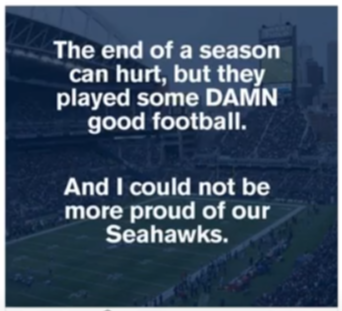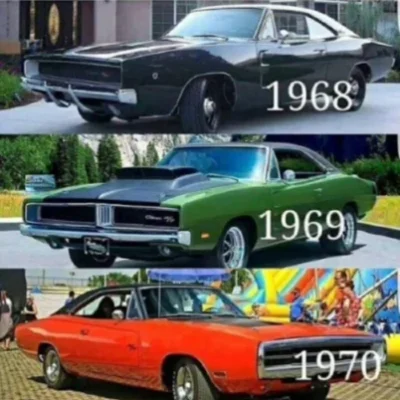Updated: January 11, 2021
How To Create Facebook Posts That Get More Shares
Comments are powerful, but nothing cuts through the often misunderstood and supremely powerful Facebook algorithm like shares.
All social media algorithms love shares, most especially Facebook. As the world’s largest social media network isn’t hurting for content these days, their algorithm now prioritizes engagement. Simply put, Facebook only cares about keeping people on their site longer, and that takes engaging content.
How does Facebook know what content is engaging? The all-powerful Facebook share, of course.
If you want to power up and persuade more people to share your content, you need to know about the psychology of what gets a post shared and how you can use this knowledge to expand your organic reach.
The three things to keep in mind while creating your content:
- Your post must cause emotion because emotions are contagious.
- Nostalgia is an enormously powerful emotion you can invoke to get more shares.
- Positive emotions will outperform negative ones nearly every time, unless fear is required for your niche.
Emotion Fuels The Human Desire To Share
When somebody feels an emotion from your post, they’re most likely going to share it. As human beings, we like to share how we feel, so you must create content that causes an emotional reaction.
An emotion can be anything anyone feels – so making them laugh is great – happy, sad,
patriotic, even angry, counts as an emotion – if you make somebody feel something.
As I said, sadness and anger are emotions that you can use. Personally, I’d recommend not turning to negative emotions unless you absolutely must. While causing a person to feel something negative can lead to shares, the University of Pennsylvania did a big study, and they found that positive content got far more shares than negative content.
After all, most people don’t want to share doom and gloom with friends, family, and co-workers.
If your brand centers on doom and gloom. For example, if you provide food or tools for the apocalyptic niche, then it would make sense to use fear to power up shares on your world-ending content.
Basically, the stronger the emotion they feel, the more likely they are to share it.
Who are they going to share with?
So how do people decide what to share? Well, most people are motivated to share based on their online social group. Whether they know their friends and family would experience a similar emotion as they did.

Top 5 Reasons People Share On Facebook
The New York Times did a massive study about what drives people to share content, and these were the top five:
1. They want to better the lives of others. Whether it was an encouraging or motivational quote and image, they wanted to improve the lives of their friends and family by sharing.
2. They want to spread the word about something they believe in. By sharing, it becomes part of their identity whether it’s political, charitable, or nostalgic. If it’s something they believe in, they want to put it in front of their friends and family.
3. They share because they like having people comment and engage. It isn’t just brands and companies that desire engagement. Individuals seek engagement with their social circles and by sharing content they believe will create conversations, even arguments, they can get their friends talking.
4. They want to grow and nourish relationships. In many ways, this comes down, yet again, to what the individual considers part of their identity. A person shares something specific and others comment on it, “I didn’t know you were into that. I’m into that too, let’s talk!”.
5. They want the content to reflect their online identity. If the individual is a “cat person” they are highly likely to share anything with a cat in the image or that mentions cats. Cats are part of that person’s identity and personality.
The 3 Categories of Most Shared Content
So, how do you create more shareable content? Well first try and make it fit into one of these three categories which according to UCLA represent the most shared social media content.
Entertainment
Obviously, we all love to be entertained so if we see something that makes us really happy or amused or something from a reality show or makes us laugh, we want to share it for other people to feel that same thing that we felt. Remember, as humans we want to share our emotions with others so while you look at that emotion-inducing post as merely a post, others will see it as an emotion to share.
Inspiration
Things that inspire us are very sharable, and it’s not just inspirational quotes. Inspiration takes many forms, so use them all. You could use an inspirational story, short-form video, or infographic.
Utility
We like to share things that we think will be useful or helpful to other people. For example, very few things are shared more readily than life hacks.
Time For Examples
Team Pride, Inspiration & Solidarity

Local Collision Center Uses Humor

The example above comes from a ServerWise client who used this photo found on Reddit to share a quick update on their business struggles during Covid-19. A serious topic was lightened with humor and people loved it – over 200 shares for a small community-based business is very good.
The post read, “The client said he wanted the biggest wheels we could find.”
Nostalgia Gets 67 Shares For New Local Business

67 shares for a brand new small business is nearly unheard of. I would have been thrilled if the client received double digits first starting out. But nostalgia along with a bit of education is always going to power up shares on Facebook.
People love remembering and they love sharing those memories.
Beyond shares, the comments were impressive, with over 15 comments in under a day.
How To Get More Shares On Existing Posts
You probably already have posts up and may feel that they should be getting more shares. But what can you do to increase engagement for pre-existing content?
Actually, here are three things that work quite well most of the time to boost your already posted content.
1. Ask people to share it.
Never ask for shares in the post itself. Facebook hates it when you use engagement bait language like, “Share if you love cats too.”
Instead, you could DM a few key friends or people that you know have a good following that would be interested in the content. Really think about the people you ask and make sure their personality is a good fit for the specific post. Send a quick DM and say, “Hey, would you mind sharing this and adding a thoughtful comment to the top?” Nothing wrong with doing that.
A few of those can really get a post going.
2. Share it yourself.
If it’s on your business page, share it to your personal page and add a comment to it.
Share it in some Facebook groups.
Every time you share it, the little number at the bottom of the posts that says, “5 Shares.” Acts as a sort of psychological nudge, whispering to a person, “Maybe you want to share this too, huh? Huh?” It works.
3. Get people to tag friends in the comments.
You might start this on your own – you put something up on your business page, and then you go down to the comments with your personal page and say, “Hey @Sara, thought you might like this too.” And then Sara comes and checks it out, and maybe she shares it.
You’re just getting new people to the post by tagging them.
Most importantly, don’t spam your friends. This trick works if it’s done within reason and practicality. Don’t tag Sara if you’re not confident Sara would enjoy the specific content.
Now keep in mind as you’re trying to create shareable content for your brand, even if you look at some of the biggest brands that get the most shares, every post doesn’t get 500 shares so keep your expectations realistic.
When first starting out, I always suggest you focus on the quality of your content first. Don’t focus on the quantity. Sharing often is important, but that will come in time. First, start by sharing well-written posts that invoke an emotion and sends a message and doesn’t sell anything. Sharing is all about building your brand and reputation online and using that to build an online community. You can monetize that community later.
No matter what, don’t get discouraged. As with all worthwhile things in life, this process takes time, and it takes even more time to get good at it. Your business is worth the effort.
Of course, if you’re a ServerWise client and are feeling overwhelmed or confused, open a ticket, and we’ll get you sorted.



Content marketing is the backbone of the biggest success stories over the last decade. I’m referring to companies like Zomato, Canva, ThinkGeek, HootSuite and even Blendtec. It’s not surprising that so many brands are focusing on content marketing, given the average ROI is twice any other type of digital marketing. Keep Learning >

Imagine a magical platform where you can share your first video with zero followers and suddenly have millions of views. Sounds unbelievable, doesn’t it? That is the current power of TikTok and many small and local businesses have experienced the sudden impact of a viral post on the young platform. Keep Learning >



